Hip-hop originated in 1970s New York (although it’s highly debated by neighborhoods (Queens, Brooklyn) that were the originators). Even so, the culture began to rise among youths of the time from all neighborhoods. B-boying (break-dancing), jamming to local disc jockeys. The music carried across from coast to coast, inviting those who are creative and have something to say. Meant with much criticism from the mainstream during its prime, hip-hop has rebirthed into today’s pop culture. The popularity of hip-hop in Western culture has meant a reprisal of its fashion. Hip Hop, sometimes called, “urban”, fashion has evolved since its inception. Today, most of our accessories, shoes, and clothes come from this early scene.
One of the most notable pieces was the bucket hat. Bucket hats were first utilized as protective gear by fishermen. It first was adopted by hippies in the ’60s and ’70s, synonymous with the youth rebellion. [3] It’s possible it was also adopted into the hip-hop culture for the same reason. LL Cool J was not the first to wear this accessory, although it did become popular as he was an up-and-coming artist, showcasing the piece on the cover of his second album [6].
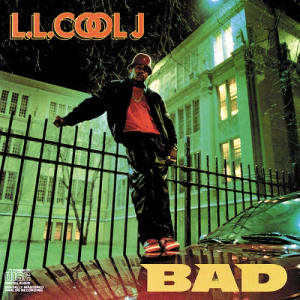
[2] LL Cool J’s 2nd Album
Specifically, he sported a solid red Kangol bucket hat. Personalization was important to culture such that other styles including ones made from other fabrics like fur and ones that were patterned–reinforced the bold style of those who enjoy it.
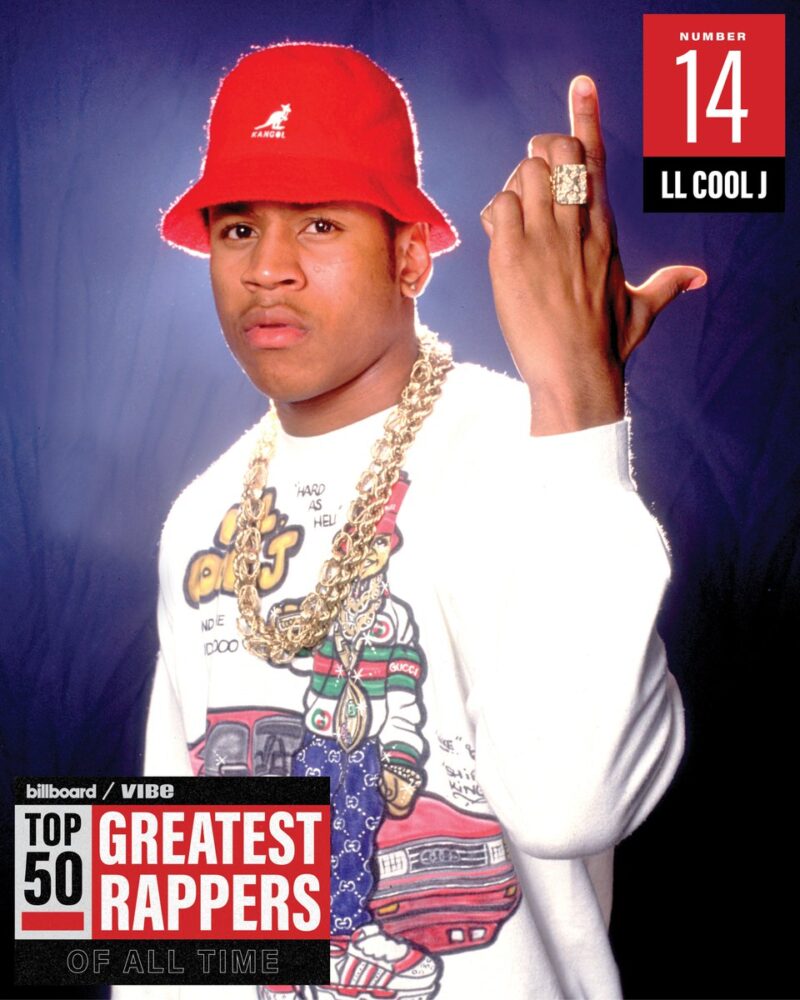
[1] LL Cool J and his famous red Kangol Bucket Hat
The term “sneakerhead” describes someone who likes collecting sneakers, usually Air Jordans. These shoes specifically were chosen as the 80s saw Michael Jordan’s popularity skyrocket and such because basketball and hip-hop were intertwining at a faster rate. Jordan’s weren’t the only shoes on the rise and 80s trio Run-
DMC would popularize Addias, with the release of their song of the same name. In addition, sneakers weren’t the only shoe style prevalent in the culture. Timberlands became a staple as it did in New York. Timberlands are construction boots that are abrasive against the harsh winters of the East Coast and would provide the necesary support for drug dealers at the time. If you know anything about old-school hip hop, drug dealing was a central part of the upbringing of many artists, Biggie and Wu-Tang Clan.
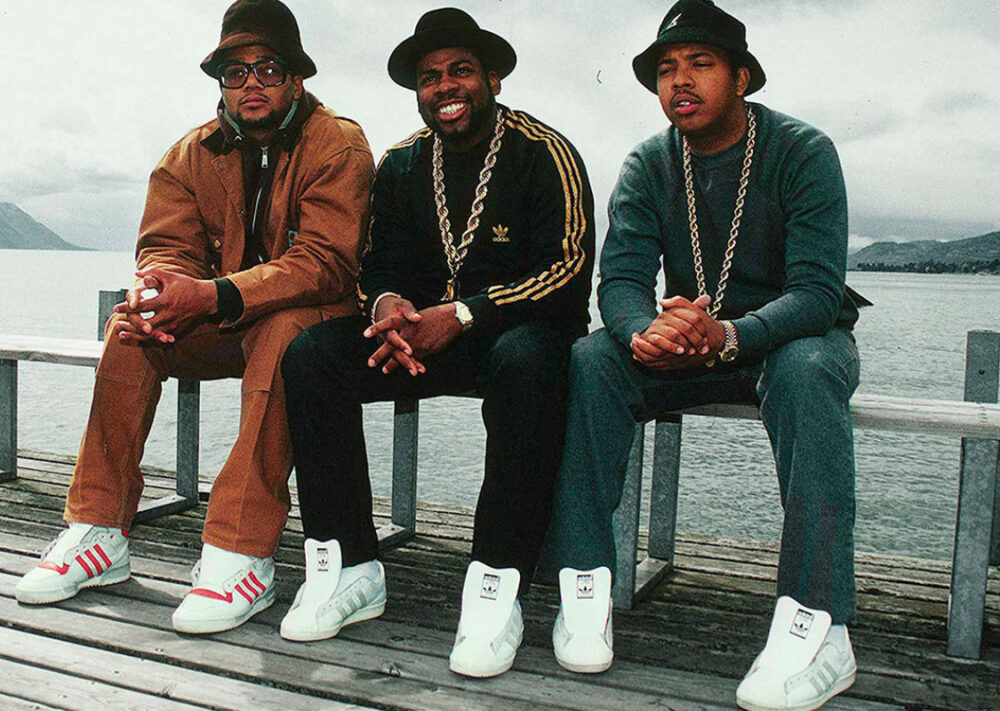
[5] Run DMC with their Adidas
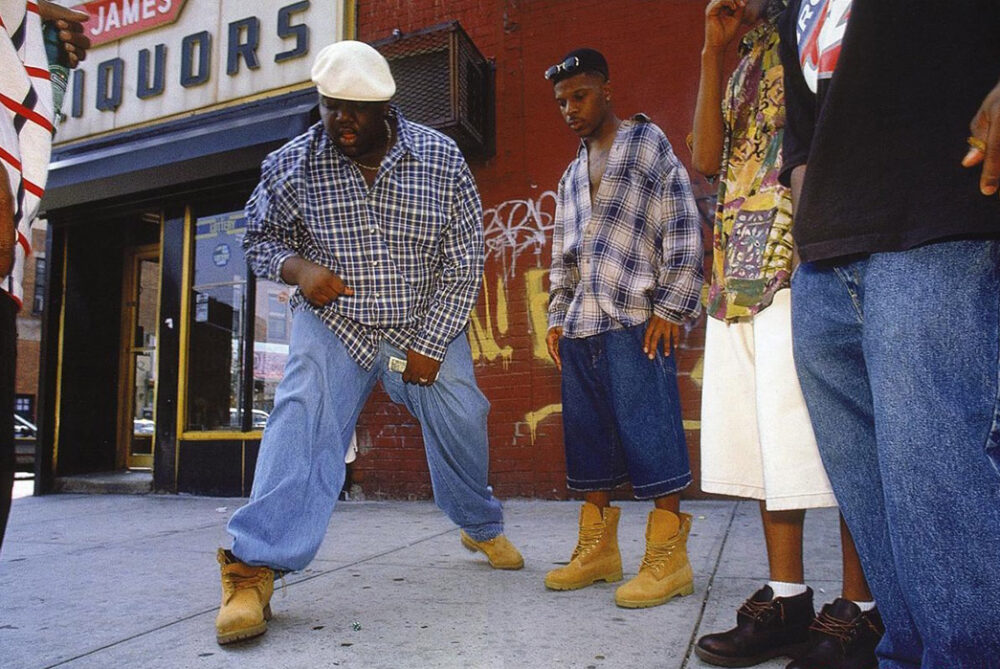
The music shifted from something b-boys could dance to towards the ‘aesthetic’ so to speak of violence, murder, drugs, and sex. Almost a “larger-than-life” change around the late 80s–especially with the rise of NWA on the west. With the ability to make lots of money, big, chunky chains were a way to make everyone know that. This trend does not see itself in everyday people’s accessory boxes the way the pieces above do, but plenty of rappers like Travis Scott and Drake still rock the jewelry.
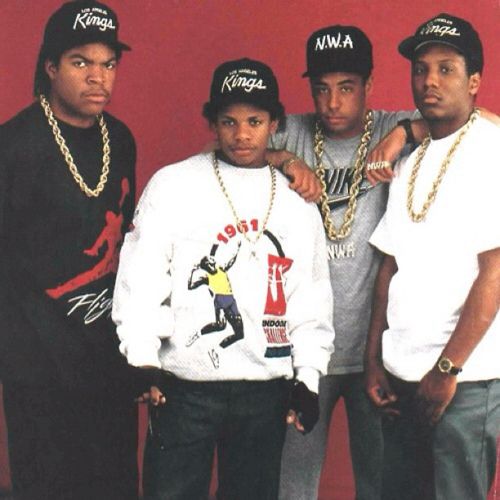
[4] NWA and their chains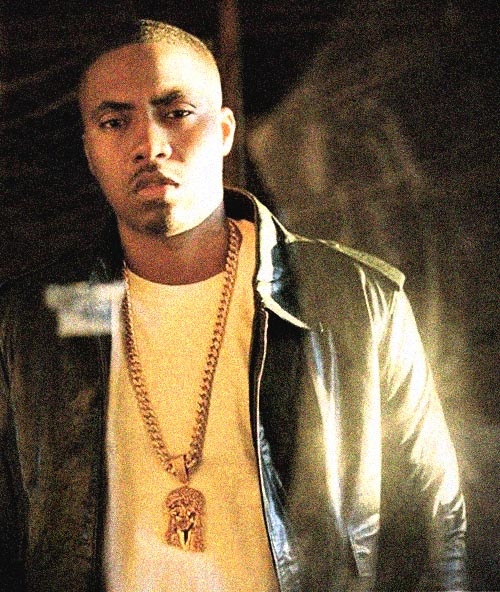
[8] Nas and his chain
Old school hip hop is known for its bold and brash music, such that it reflected in its attire. While other sub-cultures of the time saw baggy clothing, such as grunge, what made old-school hip-hop different was its flashiness of accessories and its ability to make yours, yours. Of course, there are many, many other pieces; but that would take an entire essay!
References:
[1] .“.@llcoolj Is Billboard/Vibe’s No. 14 Greatest Rapper of All Time. ?  See Nos. 20-11 Here, before the Full List Is Unveiled in the Coming Weeks: Https://T.Co/R5pufhtqne.” FetcherX, fetcherx.com/post/twitter/1620890239907827712?search=11. Accessed 24 Jan. 2024. [2] “Bigger and Deffer.” Wikipedia, Wikimedia Foundation, 10 Jan. 2024, en.wikipedia.org/wiki/Bigger_and_Deffer. [3] “A Brief History of the Bucket Hat.” The Wrap Life, thewrap.life/blogs/articles/a-brief-history-of-the-bucket-hat. Accessed 24 Jan. 2024. [4] “Go Kings. #NHL #playoffs: 90s Hip Hop Fashion, Hip Hop Fashion, 90s Hip Hop.” Pinterest, 10 Nov. 2018, www.pinterest.com/pin/132152570301969985/. [5] Le, Michael. “Run D.M.C. X Adidas Superstar Rumored for April 2020 Release.” Sneaker News, 17 July 2020, sneakernews.com/2020/01/07/run-dmc-adidas-superstar-2020-release-info/. [6] Maberry, Sarah. “Peep Young LL Cool J’s Iconic Style during the 80s & 90s.” ZEITGEIST, ZEITGEIST, 8 June 2021, wearzeitgeist.com/vintage-fashion/ll-cool-j-80s-90s-style. [7] mauludSADIQ. “When Timberland Had a Stranglehold on Hip-Hop.” Medium, Medium, 10 Nov. 2023, mauludsadiq.medium.com/when-timberland-had-a-stranglehold-on-hip-hop-906afee0227b. [8] “Pin by William Mark on Nas: Love n Hip Hop, Hip Hop Culture, 90s Hip Hop Fashion.” Pinterest, 11 Feb. 2023, www.pinterest.com/pin/66780006967729726/.
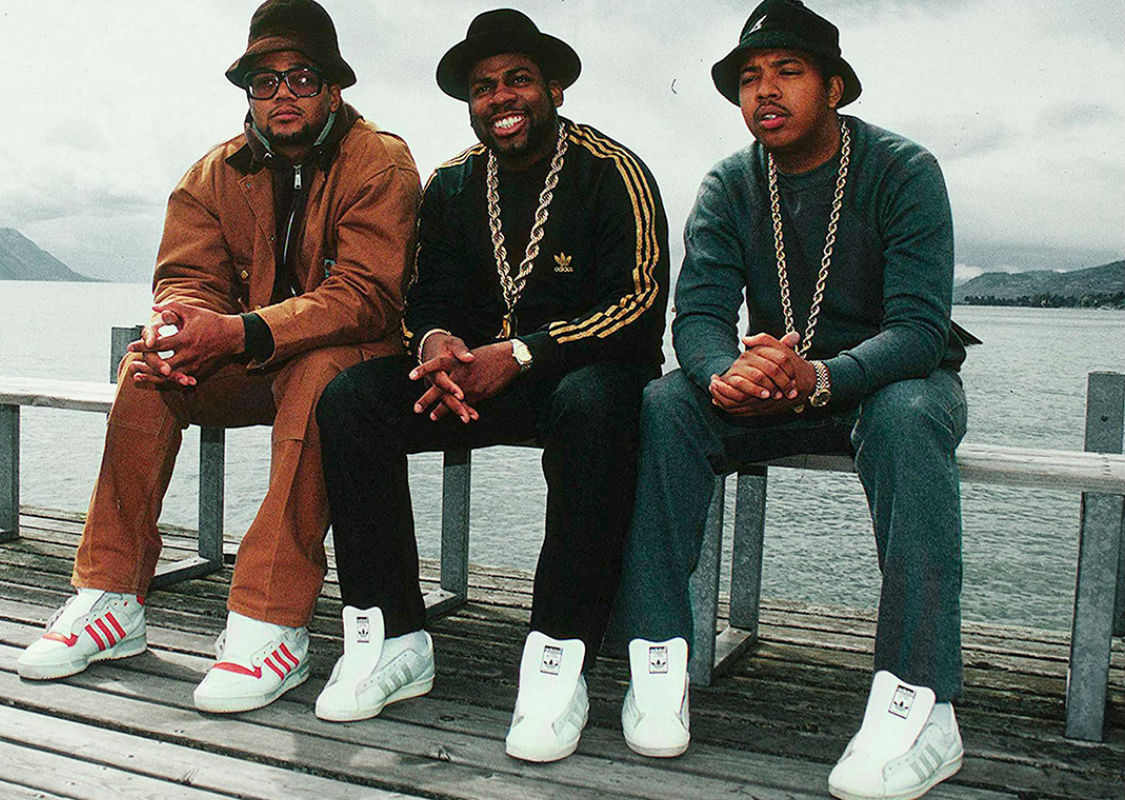
5 Comments. Leave new
I was a child in the 1990s, but I intuitively knew there was (and truly still is) something special about the music from that particular decade. Especially the Hip Hop, also the Drum And Bass.
But it was the bi-coastal American Hip Hop that I was most impressed by at the time. The styles, attitudes, word choices and heart of it all inspired me to take the particular course in life I have.
So I’m excited to see others observing the same significant impact(s) made/heralded by Hip Hop music from thirty years ago. There is little else like it in my opinion. Thank you for the walk down memory lane.
I was an fellow Gen-X real hip-hop brother in late 70s into early 80s. Where’s the real conscious hip hop? My man Kool G Rap along with the rest old school Hip Hop music mcs. Everyone were born in early 70s Era after Baby Boomers become mines. The new hip-hop elements promote mumble rap with Dre Beats are trash. I’m stepping let these young Gen-z to Gen- Alpha continue ? this hip-hop.
Hi Tiana, I enjoyed reading about your post and looking into the hip-hop aesthetic. I grew up in California where that culture was not as prevalent around us but I have always enjoyed hip-hop music and sound. I liked your dive into the fashion of that time as it is prevalent in what makes the culture and sound. What I love about hip-hop is it also finds itself being a culture for a group of people as well as an aesthetic.
I really enjoyed this look into the hip hop aesthetic, I grew up in NYC around 5 points and I have always been fond of it. Yet I never truly understood it, and it was very insightful see the different fashions and how they evolved into the aesthetic. Are there other examples of the aesthetic outside of fashion and clothing?
Thank you for reading! Love approval from a New Yorker! Since hip-hop is a culture (rather than an aesthetic, really), it finds its way into language mostly. “Flow” refers to the cadence of one’s rapping style. “Diss” refers to the rap/comeback/attack to another rapper. There are countless other terms though. Commonly, graffiti and even skating-board can be related to hip-hop. Technologically, boom-boxes and turntables are associated with the genre as forms of enjoying and creating music.